Were the Jumping Man and Pierre Tremond Inspired by Tengus?
We say that Tengu like fire, fights, and war, and during their meeting the Great Tengu decided to wreak havoc on earth. - Sana Sakura
The Grandson and the Jumping Man have long caused me to wonder if their appearances and movements are meant to evoke the general perception of birds, for that is how I perceive them without intention. Pierre jumps in a circle around the parking lot as a sparrow or robin might. In The Missing Pieces, the Jumping Man's voice sounds more like a bird or animal's cry than that of a man. Both the Grandson and the Jumping Man are synonymous with a long, almost beak-like nose.
Searching Google for theories concerning a tie between the Grandson and birds, Twitter user @thedorkmite's post appeared as a result. The Tweet concerns the similarities between a Tengu character in the video game Persona 5 and Pierre Tremond and inspired me to seek information on Tengus.
A few of the similarities shared by Tengus and the Lodge spirits:
- They are tied to the possession of animals and humans.
- They were known to kidnap children - reminiscent of how BOB came to Laura, Leland, and possibly Dale when they were young.
- They have the ability to control the wind.
- They are connected to fire and like to play with it.
- Tengus have a reputation for being mischievous and are said to practice magic.
- In Japan, there are Tengu themed firewalking festivals.
- Tengu are tied to a bird of prey known as a kite. They are said to possess or transform into the bird.
- They are connected to a monkey deity.
- They live in forests and are connected to mountains.
As someone who is not well-versed in Japanese mythology and folklore, and totally reliant on information from websites for research, I do not feel qualified or just in attempting an article of depth. Therefore, this post will focus on my minimal observations and feature several quotes from different authors. Some sections may seem repetitive, and I apologize. If you read any incorrect information, please leave a comment below and I will amend mistakes.
I will refer to the grandson as Pierre Tremond throughout, though Tremond is not his true surname.
It's worth noting that Tengus seem to be seen in a positive light more often in modern times.
The Tengu
The two most common depictions of Tengu are of a crow and human hybrid, who is often referred to as Kotengu or Karasu Tengu - meaning crow Tengu. The other is a red-faced man with a long nose, also known as Daitengu, meaning Great Tengu. The Tengu are thought of as a form of Yokai and considered Gods by some.
From onmarkproductions.com:
Tengu 天狗 are mountain and forest goblins with both Shinto and
Buddhist attributes. Their supernatural powers include shape-shifting
into human or animal forms, the ability to speak to humans without
moving their mouth, the magic of moving instantly from place to place
without using their wings, and the sorcery to appear uninvited in the
dreams of the living.
The patron of martial arts, the bird-like
Tengu is a skilled warrior and mischief maker, especially prone to
playing tricks on arrogant and vainglorious Buddhist priests, and to
punishing those who willfully misuse knowledge and authority to gain
fame or position. In bygone days, they also inflicted their punishments
on vain and arrogant samurai warriors. They dislike braggarts, and those
who corrupt the Dharma (Buddhist Law).
The literal meaning of
Tengu is "Heaven 天” and “Dog 狗." In Chinese mythology, there is a
related creature named Tien Kou (Tiangou 天狗), or "celestial hound." The
name is misleading, however, as the crow-like Tengu looks nothing like a
dog. One plausible theory is that the Chinese Tien Kou derived its name
from a destructive meteor that hit China sometime in the 6th century
BC. The tail of the falling body resembled that of a dog, hence the name
and its initial association with destructive powers.
Birds and Pierre
- In Fire Walk With Me, Leland/BOB rushes away from the Red Diamond City Motel after seeing Laura. As Leland/BOB departs, the little boy appears and begins to hop around the parking lot calling to mind the movements of a bird. His mask vaguely resembles a bird's beak.
- A birdcage can be seen in the Tremond apartment not far from Pierre.
- When the grandmother states that her grandson is studying magic, we can hear what sounds like a bird call in the background.
- The mask Pierre wears resembles the face of The Jumping Man. In The Missing Pieces, The Jumping Man makes sounds similar to that of a bird.
The Black Dog Runs at Night
Most of the sites I visited feature a similar origin story for the Tengu in that they came to Earth in a comet, shooting star, or meteor of fire. As stated above, the word Tengu is connected to tiāngoǔ, a black dog who is said to eat the sun or moon during an eclipse. According to this site, "Tiangou represents a black meteor falling towards the sky, and the mystery of space."
And from this site, "In the book ShiJi 史记, it mentioned a meteor shower however in a very dramatic way. It says, there were meteors falling down on the ground like dogs. Wherever they landed it caused fire and emitted lights to the sky. So in the ancient time, instead of praying for wishes while seeing the meteor shower, people thought it caused problems."
So the Heavenly Dog evolved from a holy mountain animal like ward off evils to a star to an evil star that caused disasters due to the meteor shower."
Though unconnected, the description of meteors "falling from the sky like dogs" makes me think of the frog-moth eggs falling from the sky after being expelled by the Experiment in Part 8 of The Return.
From https://glam.uoregon.edu:
The word tengu is usually written with characters that mean “heaven’s hound” 天狗, and as Michael Dylan Foster notes,[1] ancient references to tengu did seem to connect them with dogs, but that association was soon lost
From newworlddencylodpedia:
Although the term tengu was derived from the Chinese designation for a type of dog-like demons (天狗 (tian gou)), the Japanese spirits were originally thought to take the forms of birds of prey, such that they are traditionally depicted with both human and avian characteristics. In the earliest sources, tengu were actually pictured with beaks, but, in later depictions, these features have often been anthropomorphized into unnaturally long noses.
Recall how the track, The Black Dog Runs At Night plays during two scenes featuring Pierre Tremond. The first is when he and his grandmother speak with Laura outside the Double R. The second is when Pierre appears behind Leland/BOB in the parking lot of the Red Diamond City Motel.
The great black dog is known for eating people as well as the moon and sun. People feared the dog at night and would ignite fireworks in hopes of keeping him at bay.
In episode 14 (Lonely Souls, 2.007), Julee Cruise sings As The World Spins, a song whose lyrics include:
A dog and bird are far away
The sun comes up and down each day
Light and shadow change the walls
Halley's Comet's come and gone
The lines almost denote a level of peace or relief with the dog and bird's departure. It seems a strange coincidence that the lyrics penned by David Lynch mention a bird, a dog, and a comet.
Possession And Shapeshifting
From Wikipedia,
They began to possess people, especially women and girls, and speak through their mouths (kitsunetsuki).
From Symbolsage.com:
Like most yokai spirits, however, all Tengu spirits, including the Kotengu had the ability to shapeshift. The Kotengu spent most of their time in their natural form but there are myths about them transforming into people, will-o-wisps, or playing music and weird sounds to try and confuse their prey.
In addition to shapeshifting and flighting, they could also possess people [...]
Forests and Sacred Mountains
From Symbolsage.com:
[...] Most Diatengu were said to live in secluded mountain forests, usually at the sites of former monasteries or particular historical events.
Youtuber Sana Sakura in this video:
"Large parts of our country were - and still are - covered by mountains full of mysterious woods; and throughout thousands of years we've been wondering and imagining what creatures would live up there."
From http://glam.uoregon.edu:
Tengu are almost always presented in the garb of a Buddhist priest, specifically a yamabushi 山伏 or “hider in mountains.” Yamabushi were familiar yet mysterious figures in the medieval and early modern religious landscape: they lived on mountains and engaged in ascetic practices reputed to give them magical powers. Despite their religious lifestyle they appear in stories as social outsiders, figures of mischief or outright menace, characteristics shared by tengu.
From Japanese-Wiki-Corpus.org:
Particularly, there is folklore with Tengu flying through the sky like a bird, or that the Tengu pine (or cedar), on which they say the Tengu sits, exists all over Japan, thus providing a good example to show the correlation between the mountain worship of the Yamabushi monks and the tengu. Because trees were supposed to be dwellings of spirits, and Tengu was believed to be a mountain god, the Tengu were believed to live in trees. It is said that the flapping of Tengu's wings can be heard, or that the wind roars around such trees. It is believed that the roaring of the wind was the voice of the Tengu.
Note that the Tengu are said to live in trees. Though it may be unrelated, a poem from The Secret Diary of Laura Palmer comes to mind. It opens with: Inside the trees are souls I think.
The wind is mentioned throughout Twin Peaks. One entry in Laura's diary sees a possible Lodge-type spirit in control of the wind.
In part 11 of The Return, Hawk refers to Blue Pine Mountain as a "very revered, sacred site". From what I have read, the Tengus are said to reside on mountains that are considered sacred. Note that not only was Major Brigg's post situated on Blue Pine Mountain, but, according to Hawk's map, at its base is the mouth of a cave - more than likely Owl Cave. The dark symbol seems to hover close to Blue Pine Mountain.
Notice what appears to be a falling star in the sky near the mountain.
From matcha-jp.com:
In ancient Japan, mountains were said to be different worlds and as such, any events happening within the mountains were considered to be the result of the actions of tengu. And it goes without saying that on especially sacred mountains, tengu were guaranteed to be found. As people thought more and more on how the tengu looked and behaved, it wasn't long before they came to be venerated as a type of deity by the ancient Japanese.
Human and Supernatural Appearance
As noted above, tengu were often depicted with crow-like beaks and wings, and just as often with human features. On the noh stage they were depicted as supernatural beings, but with fairly human-looking faces.
From matcha-jp.com:
The appearance of a tengu varies by era and location, but they are most commonly believed to look like Buddhist priests, male children, or ogres.
From newworlddencylodpedia:
[...] In Japanese culture, a long nose signifies the alien, foreign, mysterious and sometimes frightening Other, who has foreign knowledge and superhuman power. …
From symbolsage.com:
With many different Tengo characters and myths, as well as entirely different types of Tengu spirits, their meaning and symbolism are quite diverse, often with contradictory representations.
Youtuber Sana Sakura in this video:
"They are really like us when it comes to variety; all shapes and sizes. They appeared in different incarnations throughout their long history. And each area has its own variety, too."
Control of Elements and Magic
From the Myths and Folklore Wiki : Their supernatural powers include shape-shifting into human or animal forms, speaking to humans without moving their mouth, moving instantly from place to place without using their wings (teleportation), and the sorcery of appearing uninvited in the dreams of the living. They are also known for their skill in martial arts.
CuriousAndOrdinary.com writes,
They are able to communicate without speaking, having powers of telepathy. They are known to shape-shift and can create strong winds by beating their wings or by using the featured fans they are often depicted with.
From Symbolsage.com:
[...] and controlled various types of magic, including wind powers. The latter is particularly iconic and most Diatengu were portrayed carrying a magical feather fan that could cause powerful gushes of wind.
From mythology.com
Finally, they exercise control over the weather. They have a special knack with the wind, which they can easily whip into tornados or hurricanes, but they can also summon rain, thunder, and hail when they feel threatened. They enjoy playing with fire, as well, and they can reduce an abbey to charred earth in just minutes.
Recall how lighting or electrical light accompanies BOB in Twin Peaks: Fire Walk With Me. More in this post.
On page five of The Secret Diary of Laura Palmer, Laura writes of a dream she had:
In the dream I was walking out by the Pearl Lakes, and there was this very strong wind, but only around me. It was hot. The wind. And about twenty feet away from me there was this man with long hair and very large, callused hands. They were very rough and he held them out to me as he sang. His beard didn't blow in the wind because the wind was only around me. [...] Then he lifted his hands up in the air very, very high, like he was growing bigger and taller every minute, and as his hands went up, I felt the wind around me stop and everything went silent. I thought that he was letting me go because he could read my mind, at least it felt that way. And so when he stopped the wind with his hands like that, I thought he was letting me free, letting me go home.
There are a few other examples from the diary that lead me to think BOB or another spirit is tied to the wind that touches Laura.
The script for episode 27 (2.020, The Path to the Black Lodge) seems to imply BOB can manipulate the wind.
32. EXT. MONTAGE/ WOODS - NIGHT
Suddenly: a series of IMAGES, fast-paced, accompanied by the appropriate music, the sounds of owls, raging wind.
JOSIE screams, trapped within the drawer pull.
CAMERA POV races madly through the woods, headed toward the Black Lodge.
Then, in an instant, quite jarringly - SILENCE, a grove of trees, the air still and calm. An eerie beat. An ARM coalesces in midair, inch by inch, now reaches about testing the cool night, fingers prodding. The wind begins to rise. Satisfied, the arm recedes, disappears.
A beat. BOB'S disembodied HEAD follows. Fierce winds blow, shaking the trees with mighty force. Bob's floating head peers about, now snaps back into a feral HOWL. Then Bob VANISHES in a BLINDING FLASH OF LIGHT.
The winds recede. All is calm again. Save for the patch of SCORCHED earth below.
Youtuber Sana Sakura in this video:
It was said that the Tengu had the body of a man, but with wings that carried him through the sky as quickly as a falcon. Besides, he had the divine power to see 100 years into the future!
Sakura states the Tengu have the ability to see into the future which makes me think of Pierre's recitation of J'ai une ame Solitaire, a message later tied to death. Pierre is also able to see that BOB/Leland is searching for Laura's diary.
Firewalking
This article focuses on the annual firewalking festival held in Japan. From what I have read, the Buddhist monks that the Tengu torment and mock practice firewalking as well.
Chaos and Destruction
Youtuber Sana Sakura states in this video:
We say that Tengu like fire, fights, and war, and during their meeting the Great Tengu decided to wreak havoc on earth.
The Tengu watched in amusement from their lairs, while political chaos, starvation, and killing altogether lasted almost 300 years.
From newworlddencylodpedia:
In this context, Japanese Buddhists long held that the tengu were disruptive demons and harbingers of war (much like their Chinese prototypes). In their malevolent and disruptive behaviors, the tengu shared similarities with European goblins. Over time, this overtly negative evaluation was softened somewhat, as the Buddhists came to acknowledge the popular conception of these spirits as morally-ambivalent protectors of the mountains and forests, who were as likely to bring windfalls as calamities to humans intruding upon their domains.[1]
From mythology.com
"[...] In some cases, their motive is noble: they teach sound-hearted men who want to fight for a for noble cause. In other cases, they simply want to encourage chaos and destruction."
From matcha-jp.com:
In China, tengu are an ominous, baneful dark star that has fallen from the Heavens to the Earth, said to cause terror and horrific natural phenomenon between humans (for example, wars suddenly breaking out).
[...] Tengu spirits didn’t just kidnap priests in most myths, however – they’d often kidnap children as well. Especially in later Japanese myths, this theme became very popular and the Tengu switched from mostly tormenting just Buddhist, to being a general nuisance to everybody.
From Japan-guide.com:
Most likely derived from ancient Chinese legend, the first mention of Tengu in the early eighth century coincides with the spread of Buddhism from China and Korea. At this time, they were largely malevolent creatures said to abduct children in the forests and cause fires in human settlements.
Kidnapping of Children and Loss of Memory; Birds of Prey
From newworlddencylodpedia:
[...] In stories from the 13th century onward, the tengu were now understood to be interested in kidnapping children and young adults—especially those who trespassed (whether knowingly or not) into their sanctuaries.[25]
From symbolsage.com: "The behavior of the Kotengu was also very similar to that of birds of prey – they were said to attack people at night and often kidnap priests or children."
[...] These beings have been depicted as evil, morally ambiguous and as benevolent, depending on the myths.
They are known for their magic, shape-shifting, possession, kidnapping of young children, their mischievous and formidable natures.
From onmarkproductions.com:
The ancient form of the Tengu was the “karasu” or “crow” Tengu. Portrayed as an evil crow-like creature with the body of a man, it was capable of kidnapping adults and children, starting fires, and ripping apart those who willfully damaged the forest, for the Tengu live in trees.
Note that Pierre Tremond is tied to fire as he seems to conjure it with a snap of his fingers in Laura's dream or vision.
From curiousandordinary.com:
The karasu tengu are very territorial and will protect the forest areas in which they dwell. They have skills with weapons and were known to train samurai warriors. There are tales of them bringing disease and misfortune to locations and they reportedly snatch away unsuspecting victims and return them with signs of amnesia and disorientation. There are even reports of shape-shifting and possession.
Ultimately, be on your guard when walking through forests and mountain areas. If one is attacked by a karasu tengu, it seems there is very little change of survival."
From Symbolsage.com:
The behavior of the Kotengu was also very similar to that of birds of prey – they were said to attack people at night and often kidnap priests or children.
[...] The idea of an ex-priest demon monster kidnapping and tormenting children sounds positively disturbing, especially from today’s perspective. Whether those myths were based on some dark reality, however, is unclear. Most myths don’t include anything as dark as sexual abuse but simply talk about the Tengu “tormenting” children, with some of the children remaining permanently mentally disabled after the incident and others just temporarily unconscious or delirious."
From onmarkproductions.com:
Sometimes, too, the Tengu would abduct human beings, only to release them later, but the “lucky” survivor would return home in a state of dementia (called “Tengu Kakushi, meaning “hidden by a Tengu”).
A reoccurring theme of Tengu abduction is the erasure of survivor's memory of the event. This is highly reminiscent of not only the state in which BOB leaves his victims, but that of several people in The Secret History of Twin Peaks and The Final Dossier, most notably Annie Blackburn after she escaped The Black Lodge.
Youtuber Sana Sakura in this video:
"[...] during the 12th century Tengu became an essential character in a collection of stories the Konjaku Monogatarishu. Here Tengu had become associated with the black kite; a kind of bird soaring across the skies of Japan: The flying bird-like Tengu!"
The bird-like Tengu is usually thought of as more animal-like and dangerous. Not only do Pierre's mask and the Jumping Man's face slightly resemble that of a bird, but BOB's face transforms into an owl in Cooper's dream in episode two (1.002, Zen or the Skill to Catch a Killer). Though the ties are not concrete, one is reminded of BOB's animal-like behavior and the electrician's words, "Animal life."
The Goddess Amanozako
Some scholars cite a connection between the Tengu and another deity, the Goddess Amanozako, in that she may be thought of as an ancestor.
From yokai.fandom.com
Amanozako's hideous appearance is matched only by her foul, contrarian temper. She loves to go against the crowd, and does exactly the opposite of what is expected. She frequently possesses the hearts of humans, causing clever people to become overly proud and haughty, or foolish people to lose control of their tempers.
Amanozako was born from the temperamental storm god Susanoo. He had let his ferocious spirit and bad feelings build up inside him until they formed into a large ball, which he eventually vomited up. That ball of ill-feeling became this goddess.
Amanozako has one son, Amanosaku. In keeping with her obstinate nature, she spawned him all by herself without any partner.
Amanozako's birth sounds very similar to the way in which the "experiment" expels BOB who in turn is contained within a large ball or orb.
Red and Blue
Note that the Kotengu if often depicted with a blue face and the Daitengu with red. A color combination Lynch is apt to employ.
I first read of a tie to monkeys on the Tengu Wikipedia page, but I can find little information of great depth.
From the Tengu Yokai Wiki: "The tengu's long noses ally them with the Shinto deity Sarutahiko, who is described in the Japanese historical text, the Nihon Shoki, with a similar proboscis measuring seven hand-spans in length. In village festivals, the two figures are often portrayed with identical red, phallic-nosed mask designs."
Sarutahiko is described as a monkey deity.
A famous Tengu shrine in Japan named Mt. Takao features a famous "monkey park" as one of its first attractions - which may or may not be connected to Sarutahiko.
A Tengu training a monkey. Image source.
From onmarkproductions.com because of its long nose, tengu are associated with the Shinto deity. Sarudahiko (Sarutahiko) 猿田彦 who takes on the visage of a monkey, and tengu masks play a prominent role in some religious festivals.
 According to the information I've read, one of the masks depicted in this festival is Sarutahiko. The other is a Tengu.
According to the information I've read, one of the masks depicted in this festival is Sarutahiko. The other is a Tengu. Photo Source
Pierre's mask resembles a Noh mask, though it sightless.
Shamanism
A book titled Tengu: The Shamanic and Esoteric Origins of the Japanese Martial Arts came to my knowledge while searching for information concerning fire and Tengus. The book is sadly too expensive for me to purchase or borrow through inner library loan, however, Google allows a preview. The following is what little I can derive from the preview:
p. 188
The association with woodsmen or mountain foresters continues to my personal knowledge in 1987 in the mountainous region of the former provinces of Iga and southern Omi, now covered by Shiga, Nara, and Mieken.
Talisman
Carlton Lee Russell, the actor who portrayed The Jumping Man said that David Lynch told him his character was a "talisman come to life." Though a very wide interpretation, in seeing the talisman below, I am reminded of Mr. Russell's quote.
David Lynch in Japan in 1991
According to this document, David Lynch was in Japan in January of 1991 for an exhibition at the Touko Museum of Contemporary Art. A famous Tengu shrine named Mt. Takao is one hour from the city of Tokyo. This site states "[...] Mt. Takao is arguably Tokyo's best and most famous outdoor retreat." Interestingly, a monkey park is the first attraction for Mt. Takao, which is said to be saturated with Tengu iconography, according to donnykimball.com. Also, according to the aforementioned site, "The mountain enclave was first established way back in 744 at the order of Emperor Shomu as a base for Buddhism in the East."
Given it's historical significance, David Lynch may have visited the site.
This site states, "The Shimokitazawa Tengu Festival is held every year in late January early February." Perhaps David Lynch was able to behold it in person and found inspiration.
Interestingly, one of the paintings offered in Julien's Auction of Mr. Lynch's estate is titled, "Autumn Shiobara - Under Tengu Rock."
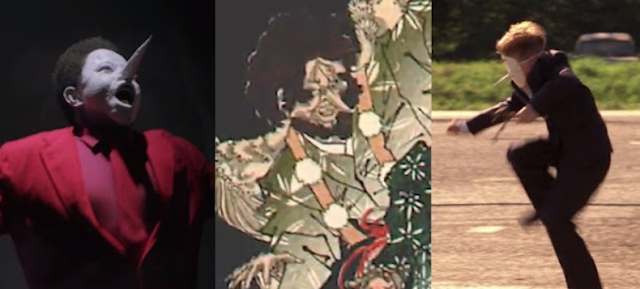
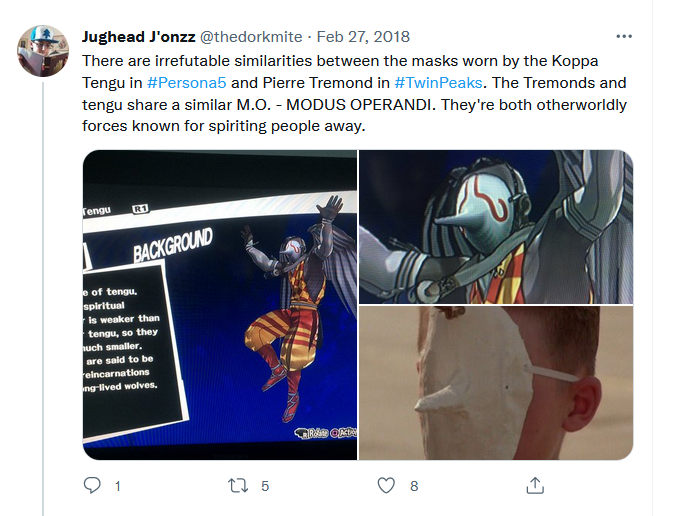

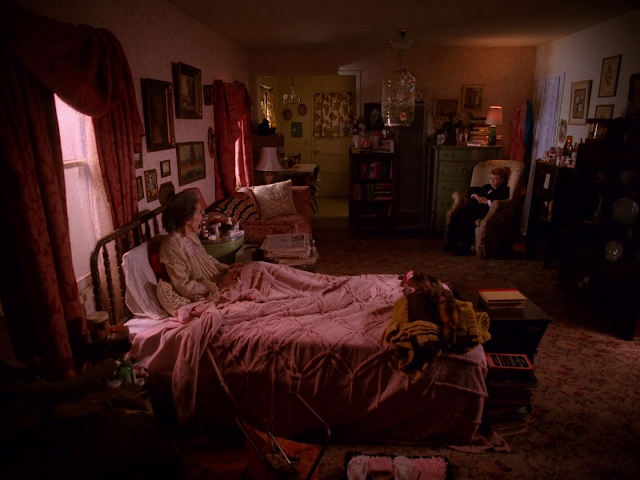

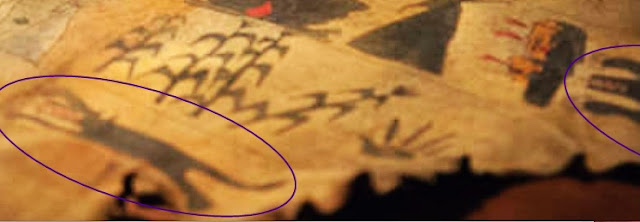
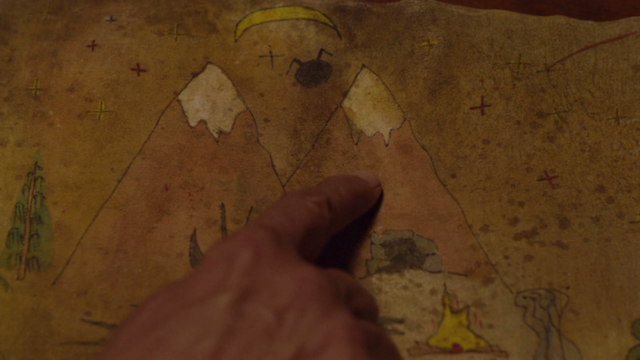


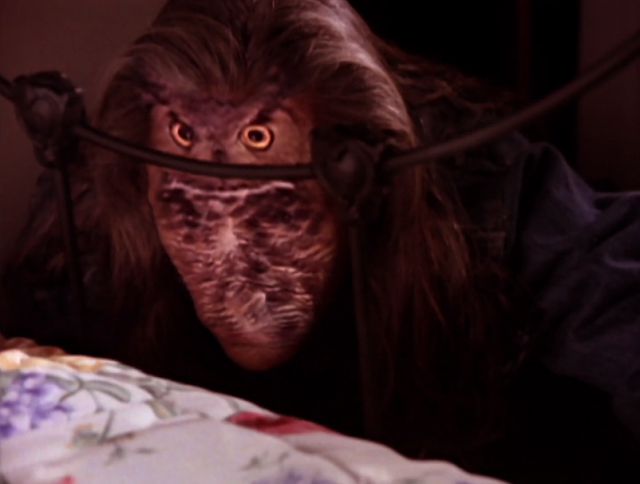

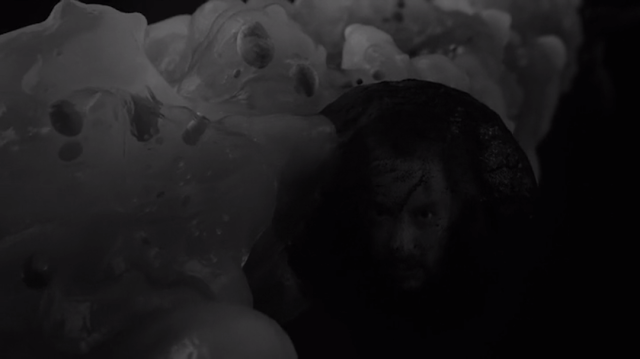
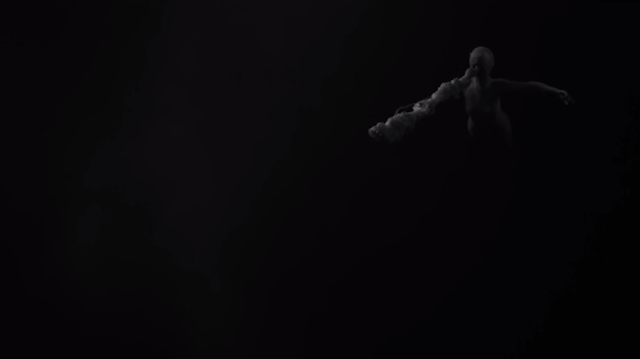







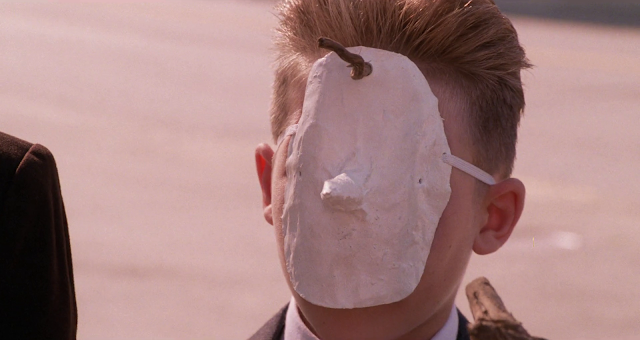










Comments
Post a Comment